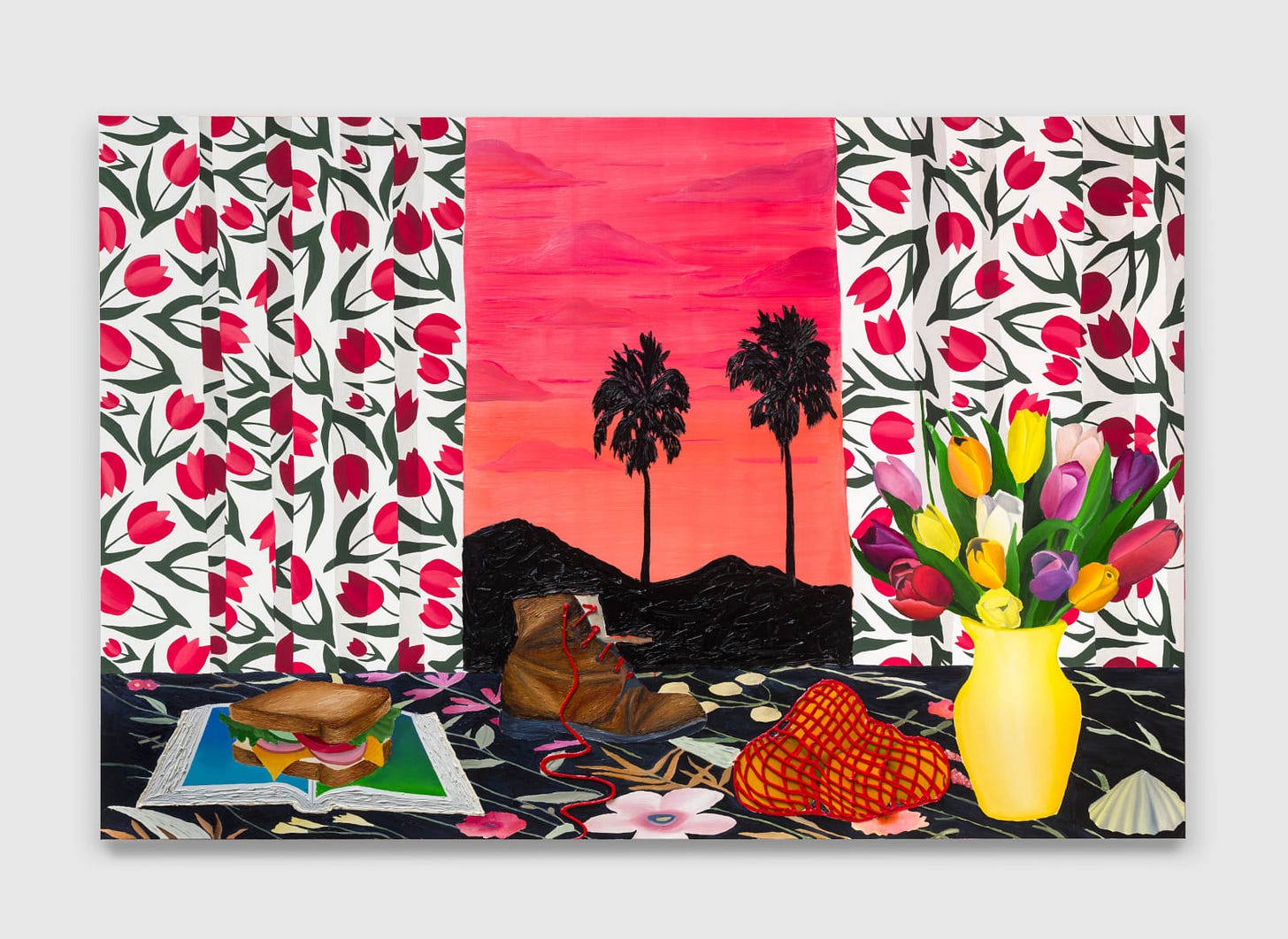
LA Art Week offers an unparalleled opportunity to explore bold, innovative artists shaping the contemporary art landscape. Whether you are art curious, starting your collection, or heavily steeped in the art world, you can’t help but feel a sense of wonder going through the various art shows and events. It goes without saying that there was a fair bit of trepidation this year given the fires, but the fairs and parties were buzzing and there was a sense of optimism in the air.
This is my third art week since I started LOTA and it’s fun to see how my perspective, taste, and style have shifted and strengthened over time (You can see previous recaps here, here, and here). Exposure to diverse artists, materials, styles, and stories has refined my eye, helping me understand what resonates most—be it the balance of traditional styles with new mediums, the spatial command of a piece, or the layers of meaning within an artist’s story and process.
At the same time, I saw a lot of art that pushed me to think a differently, discover perspectives and storylines I hadn’t previously considered or encountered. These pieces and artists were just as memorable as the ones I instinctively felt drawn to. With this lens, here are some of the artists that left an impression long after I left the shows.
(Quick note on fairs and pricing: One of the biggest questions I get is how to think about pricing—this topic deserves a full article on its own. For now, I’ve included pricing where it was made available for context. Frieze is predominantly focused on high-end and institutional buyers, while Felix offers a mix of emerging and established collectors.)
April Bey – Mythmaking & Afrofuturism
📍 Represented by Vielmetter Los Angeles at Frieze LA

April Bey’s work centers on the imagined world of Atlantica, blends mythology, Afrofuturism, and lush textile-based techniques. The pieces integrate found materials, embroidery, and mixed-media assemblage, creating layered, textural works that are inspired by Junkanoo, a parade performance that happens in The Bahamas during Christmas and New Years.
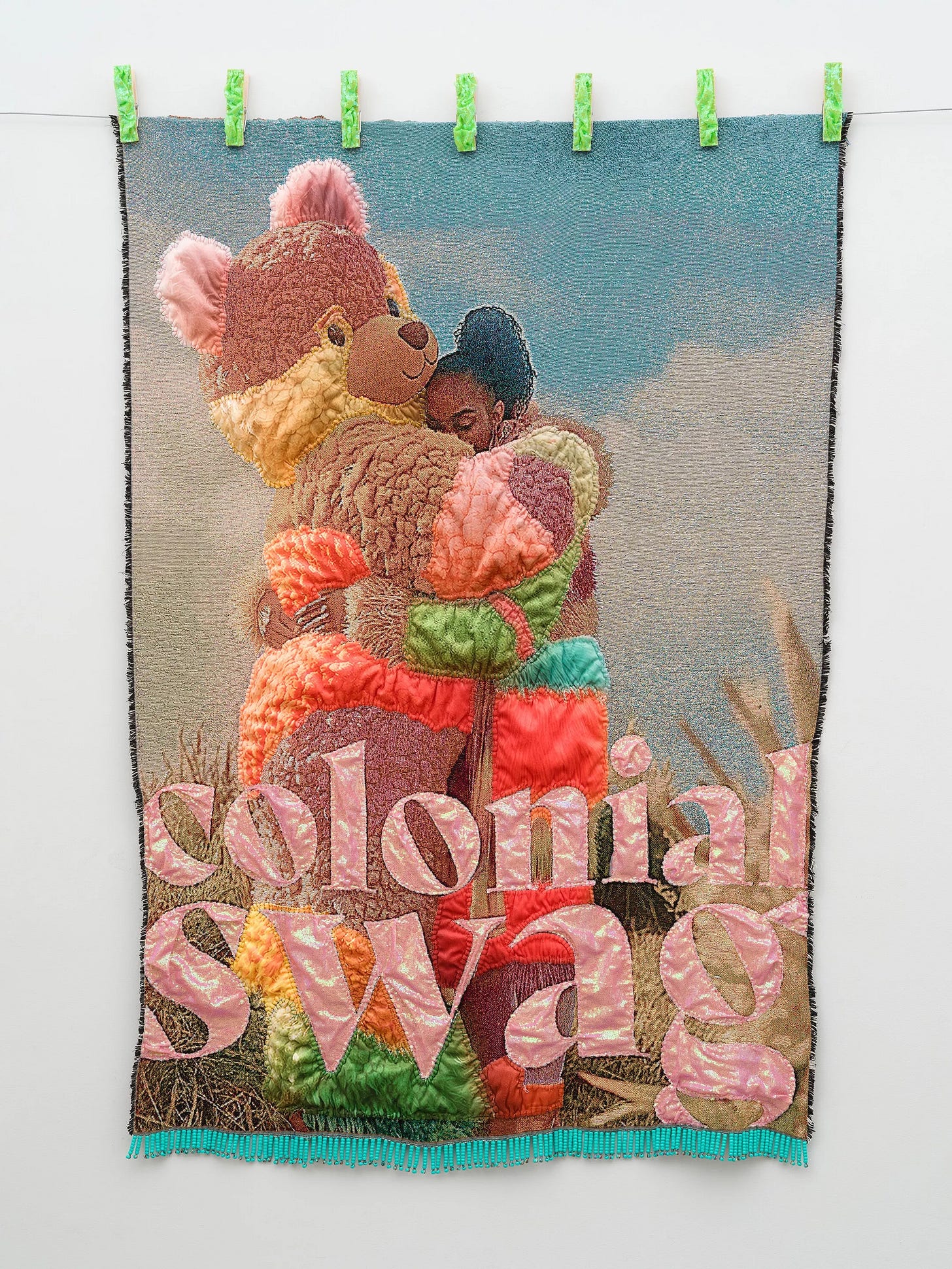
The world of Altlantica was first created by Bey’s father as a way to explain racial oppression. Bey has expanded it into an artistic universe that challenges colonial narrative and celebrates Black identity and power. The centerpiece at Frieze, We Will Not Apologize for Being the Universe; Our Own Constellation. Don’t You know Light Lives in Dark Places Too? featured four fictional Black women surrounded by animals and fauna draped in a lush green velvet backdrop. The women with their confident yet gentle gazes offer an alternative to the survival of the fittest mindset, instead advocating for mutual care and support as a path to thrive.
Bey also has a solo exhibition, April Bey: I Know All About What You Want to Know All About, at Vielmetter Los Angeles (ongoing until May 18, 2025), and is part of the upcoming group exhibition The Shape of Water at the Visual Arts Center of Richmond.
Sydney Cain – Spiritual & Historical Black Narratives
📍 Represented by Casey Kaplan (New York) at Frieze LA
Sydney “Sage” Cain’s work explores ancestral memory, transformation, and the weight of history through graphite, pigment, and alternative print techniques. Cain’s process is deeply meditative, incorporating erasure, layering, and oxidation to create figures and ethereal landscapes that speak to the presence of Black ancestral spirits. Their work carries a quiet yet powerful energy, evoking a sense of remembrance and longing. The way Cain constructs and deconstructs images mirror the fragility and resilience of memory itself.
Their work has drawn strong institutional and collector interest, with all pieces at Frieze LA selling out on VIP day at prices of $30,000 per piece. Cain’s inaugural solo exhibition with Casey Kaplan in New York this fall is set to further cement their place in the contemporary art world. A must-see.
Maia Cruz Palileo – Postcolonial Identity & Migration
📍 Represented by David Kordansky (LA, NY) at Frieze LA
Drawing from Filipino-American histories, Maia Cruz Palileo’s paintings explore the concept of home through the merging narratives of memory and imagination. Lush forest landscapes trickle into domestic scenes, mirroring the complicated and often fraught relationship the Philippines and US, the two countries Palileo calls home. Their works are deeply influenced by oral histories, colonial-era photographs, and historical documents, which they reinterpret through expressive brushwork and richly layered compositions. By obscuring or abstracting figures, Palileo challenges the authority of colonial records and creates space for reimagined narratives.
David Kordansky Gallery sold all paintings and sculptures from Palileo's solo presentation during Frieze LA's opening hours, with works ranging from $8,000–$80,000. Their upcoming solo show at David Kordansky Gallery in March 2025 promises to further explore themes of displacement and resilience.
Luciano Maia – Brazilian Abstraction & Material Innovation
📍 Represented by M+B at Felix Art Fair
Luciano Maia is a Brazilian artist whos merges elements of traditional Brazilian art with tactile and fluid compositions. He incorporates raw silk, acrylic paint, and organic forms to create immersive landscapes that appear to shift between abstraction and figuration. His color choices and material layering evoke the vibrancy and complexity of Brazil’s natural environment.
Maia’s dreamlike compositions are deeply influenced by Brazilian folk stories and mythology, lending a mystical quality to his work. His ability to manipulate opacity and transparency in his materials allows light and texture to interact in striking ways, making his pieces dynamic and evolving depending on the viewer’s perspective. Maia’s participation in Magic Echoes: Brazil Diasporas' Vibrant Encounters with Ancestrality at M+B Gallery, open through March 22nd in Los Angeles, highlights growing recognition of his work.
Alexa Kumiko Hatanaka – Interdisciplinary Print & Textile Work
📍 Represented by Patel Brown (Toronto) at Felix Art Fair
Alexa Hatanaka is a Japanese-Canadian, queer, and disabled artist based in Toronto, whose identity profoundly shapes her practice. She draws from her training in print and papermaking techniques, integrating historical land-based materials and processes into her work. Her adaptations of traditions, in the form of large-scale print installations and wearable sculptures, address contemporary questions of climate change, mental health, and survival. Recurring motifs related to landscape, fish, and bodies of water together speak to personal and collective experiences of struggle and resilience.

Her practice is informed by experience-based research and long-term community-engaged projects in the high Arctic. She also incorporates performances that reinterpret kamiko, garments sewn out of washi, Japanese paper, blending sustainability with cultural reinvention. Her choice of materials and storytelling reinforces themes of interconnectedness and the impact of globalization on land-based communities.
***
Themes of memory, mysticism, and survival ran through many of the works that stood out to me this year. These artists are deeply engaged with history—whether through archival narratives, speculative futures, or spiritual echoes—while also responding to the contemporary moment. Their works serve as vessels for resilience, healing, and reimagining what’s possible.
The resonance of these themes feels particularly poignant in Los Angeles right now, as the city grapples with the aftermath of last month’s devastating fires. From Bey’s vision of a utopia where nature and humanity exist in harmony to the blurred memories and layered histories explored by Cain, Palileo, and Maia, to Hatanaka’s work reconnecting us with land-based traditions, there is power in storytelling. These artists illuminate the ways we can find light—both within ourselves and through collective histories—pushing us toward new ways of seeing and understanding the world.



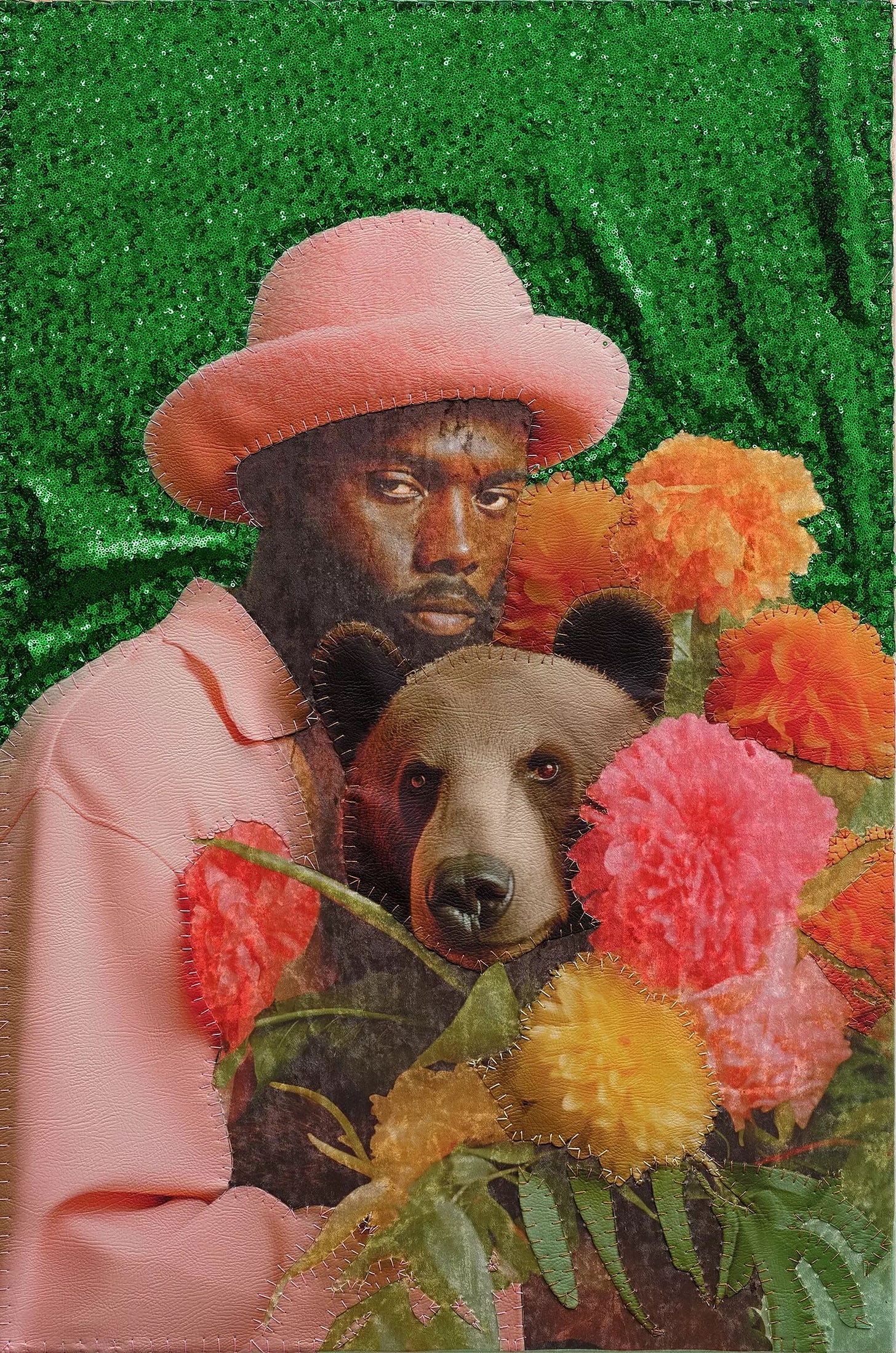
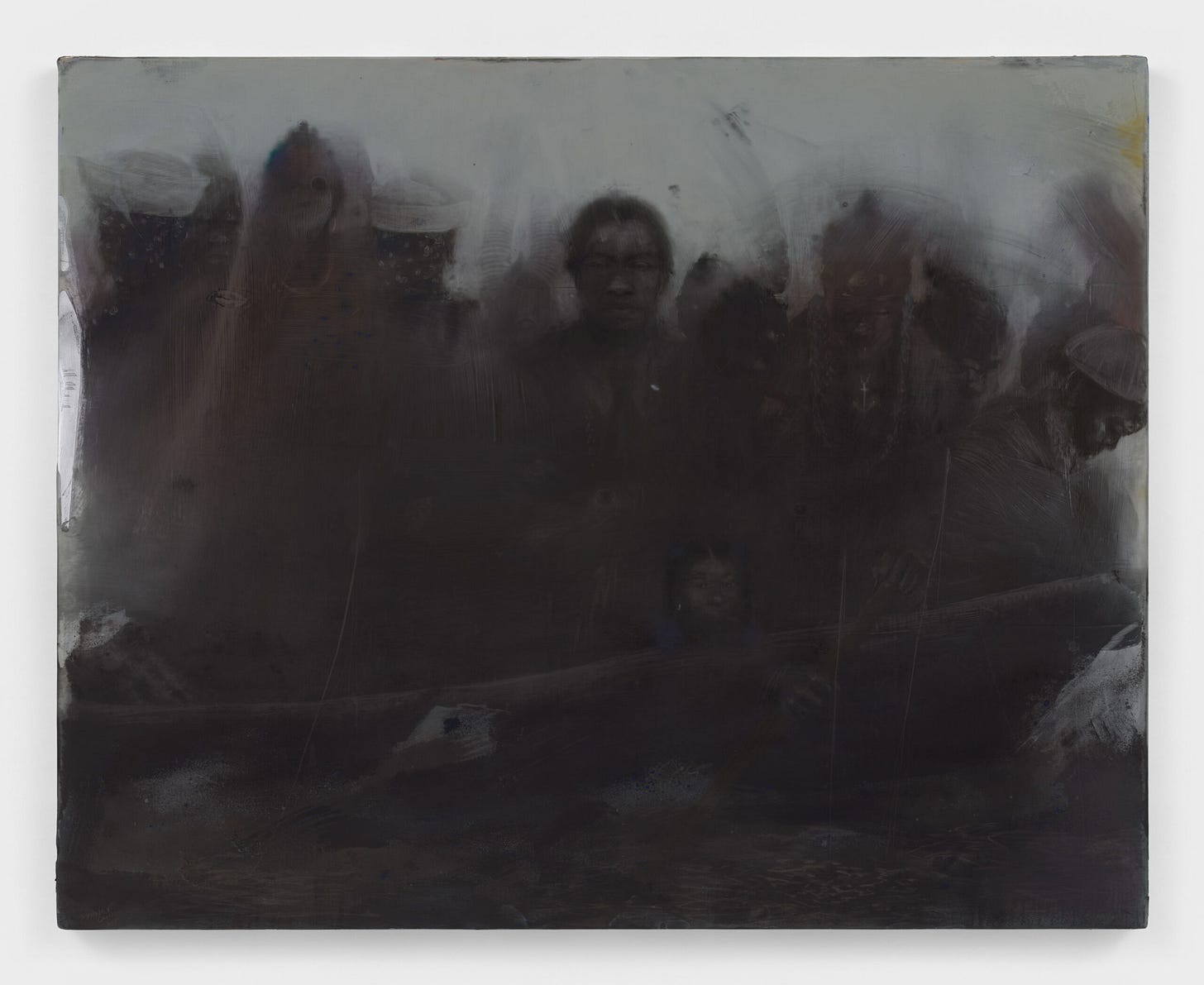
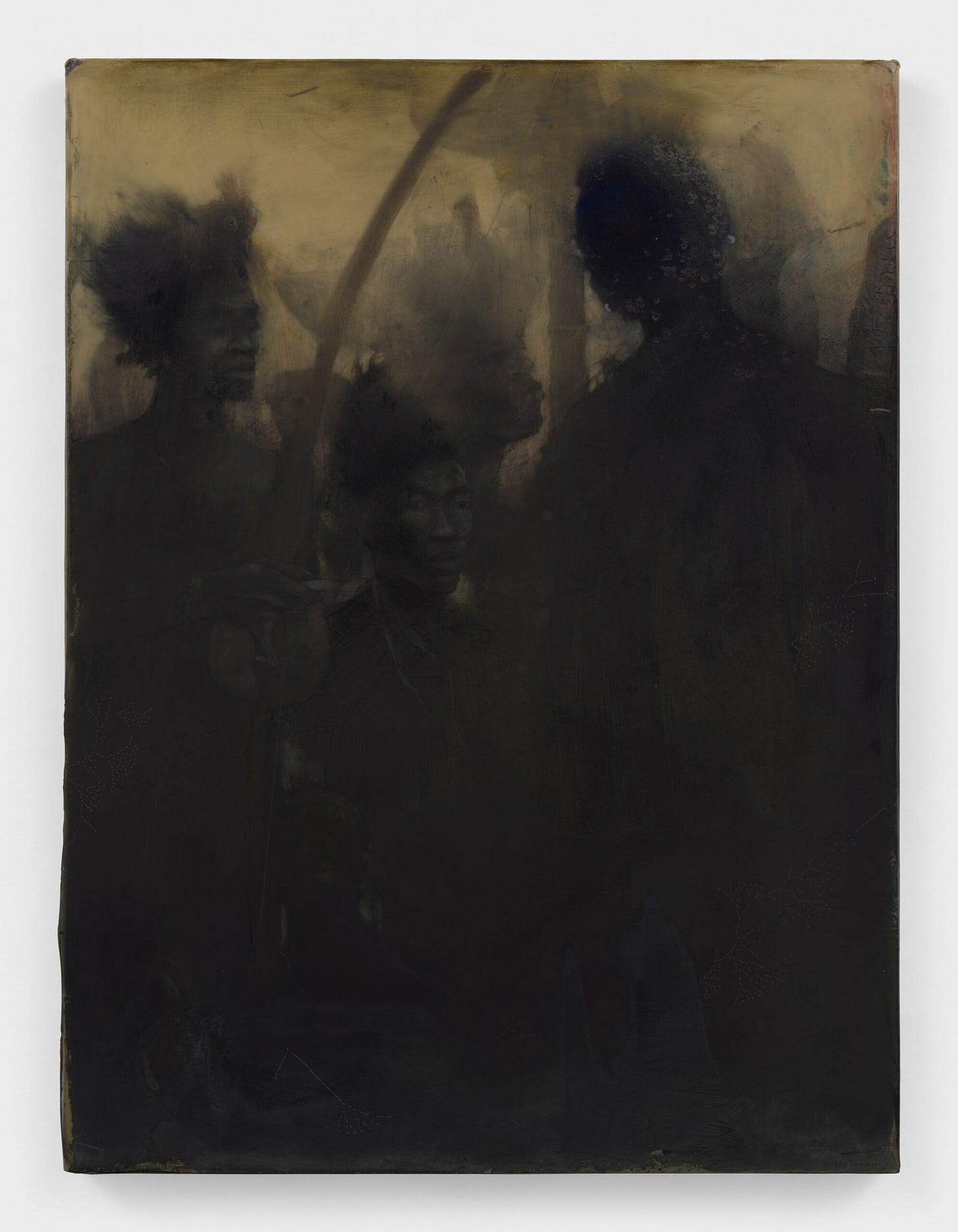
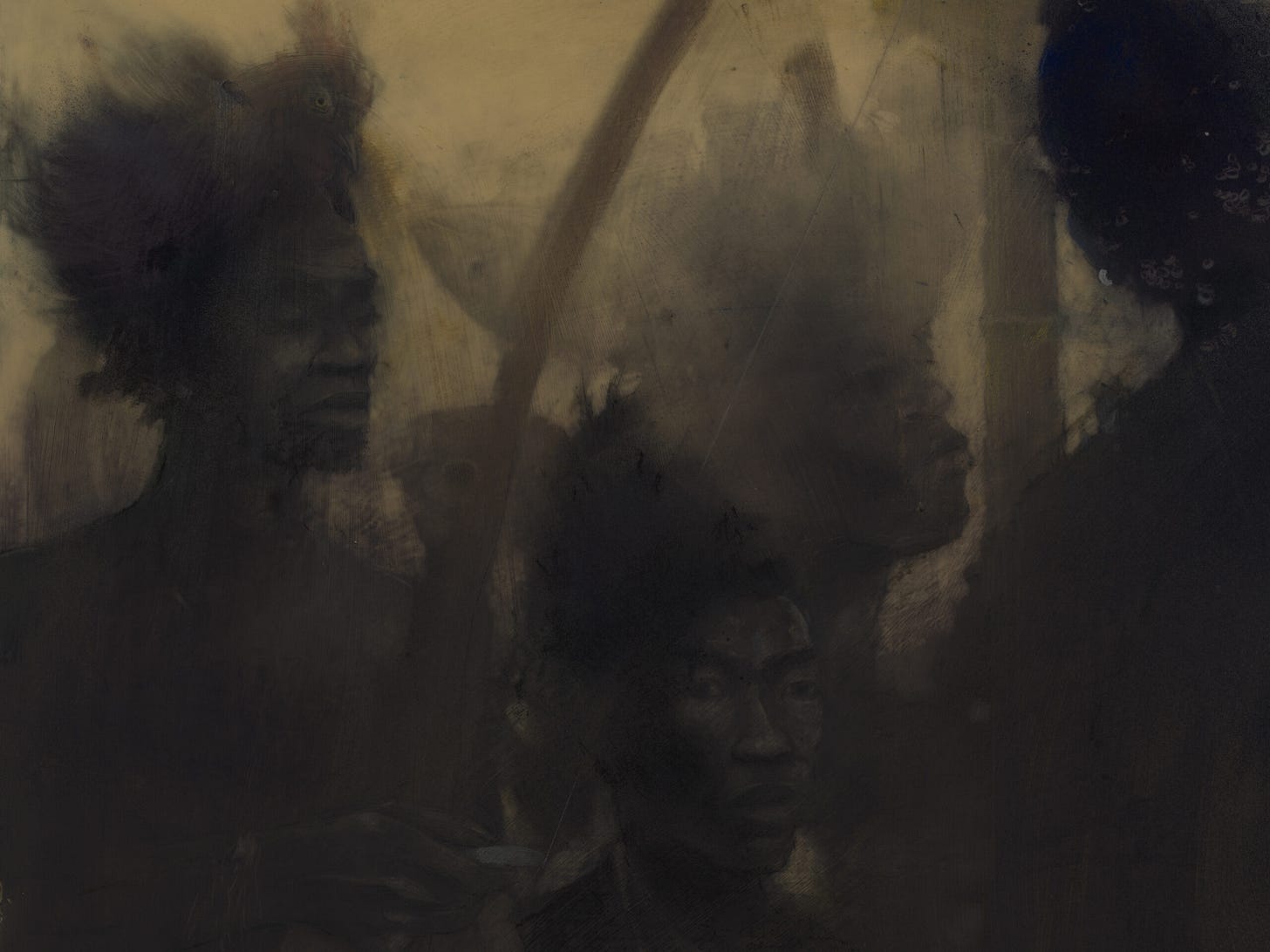
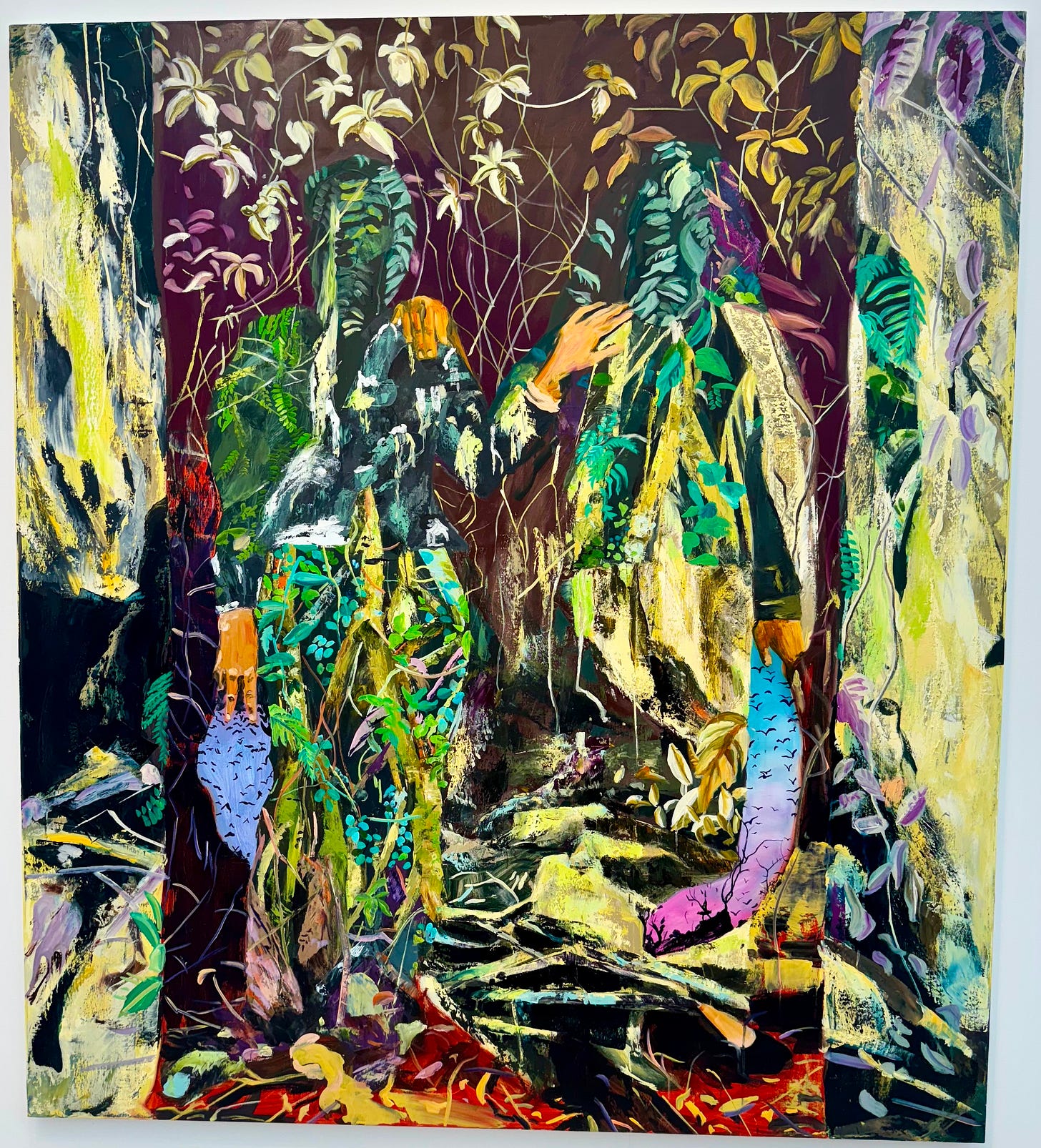
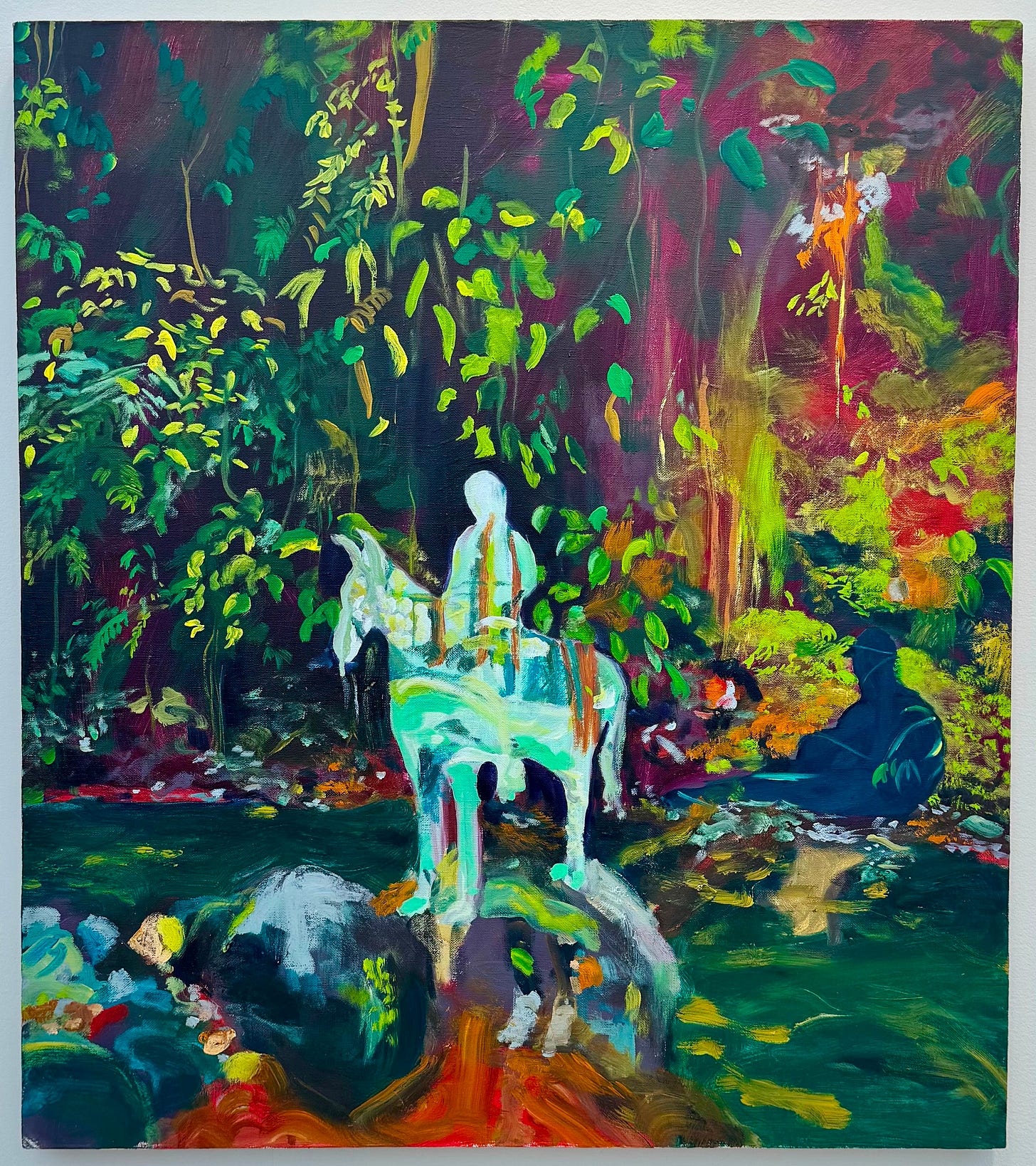
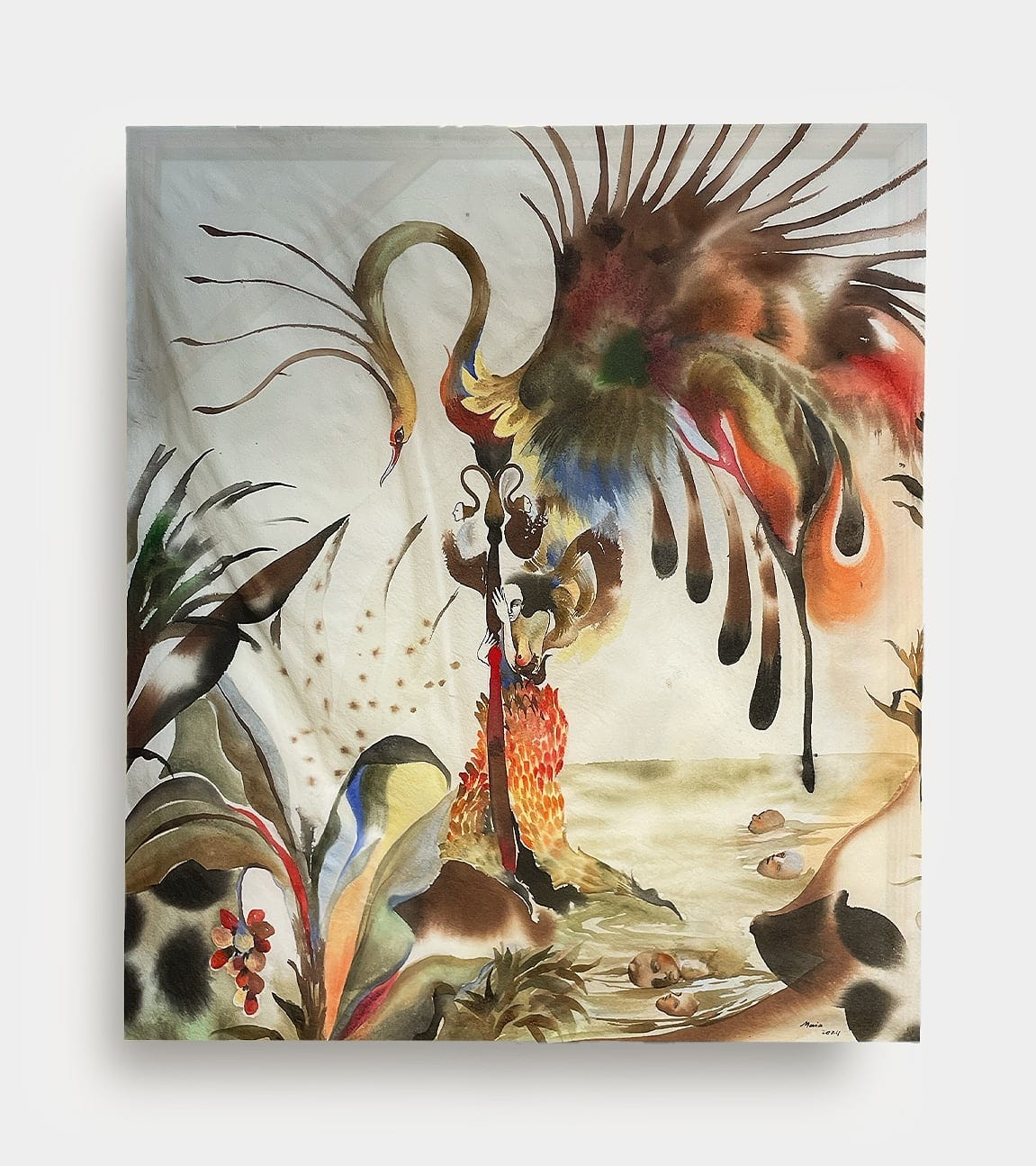
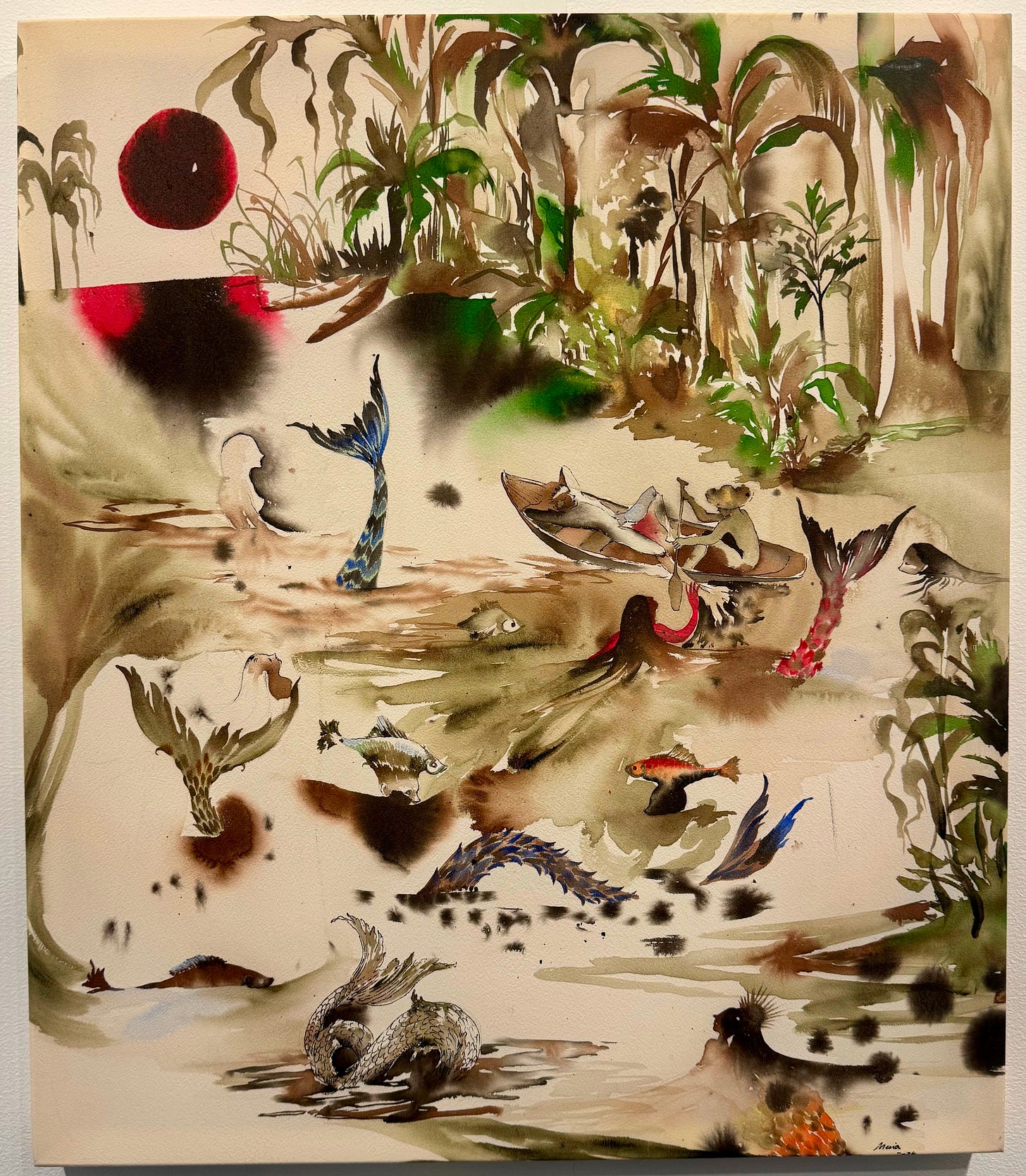
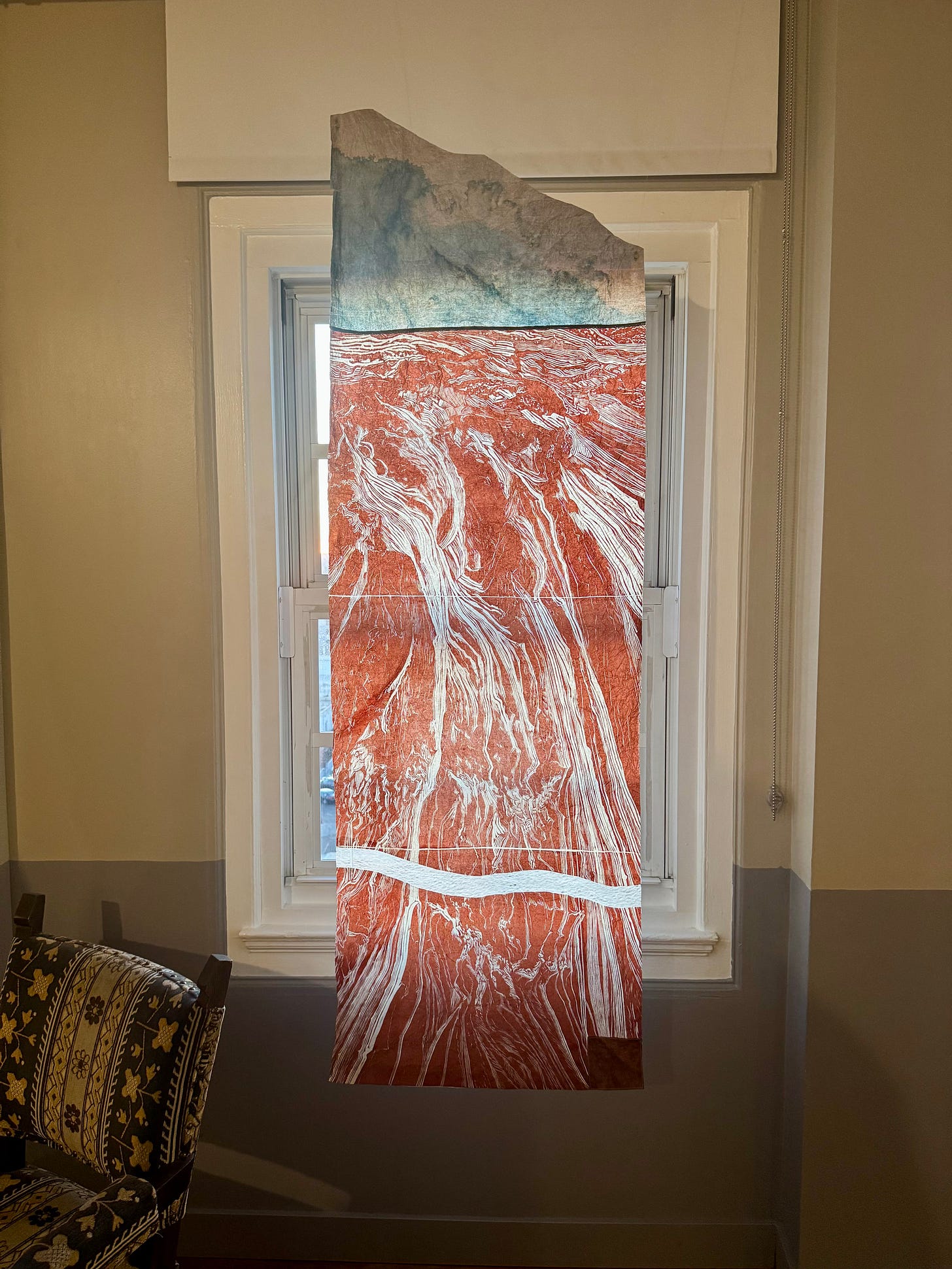
I'm new to April Bey's work and taken with it! Thanks for sharing!